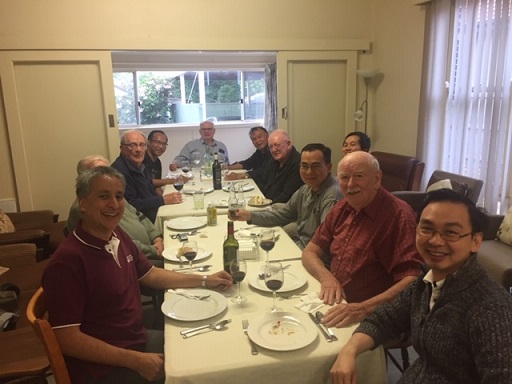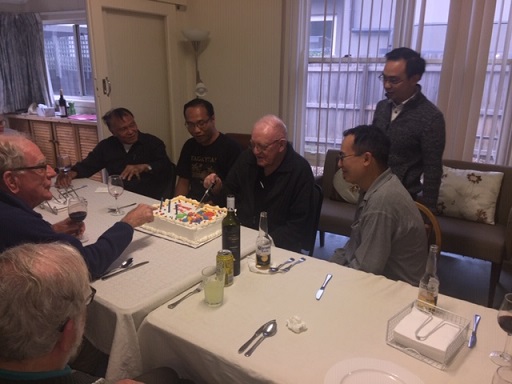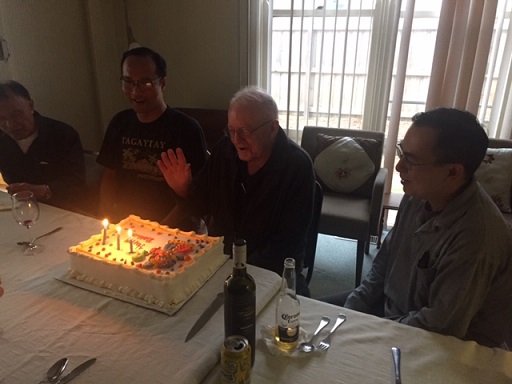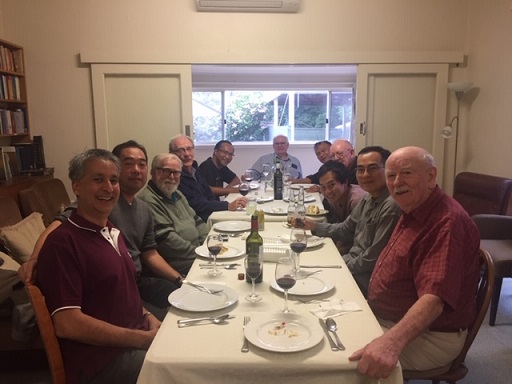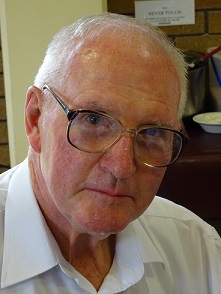Peter MALONE
OUR NEW HEART OF LIFE CENTRE VENUE – SOME PHOTOS
OUR NEW HEART OF LIFE CENTRE VENUE – SOME PHOTOS.
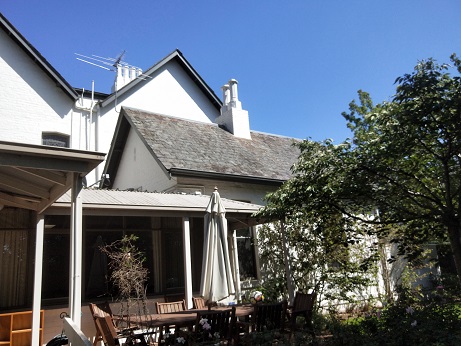
The Vicarage
After leaving our previous Heart of Life Centre, on the property of the Franciscans at Box Hill after 11 years there, we were really blessed to begin the year at our new venue,
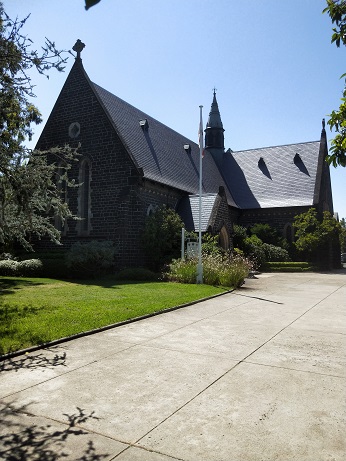
The parish church of St George
St George’s vicarage in Glenferrie Rd, Malvern, part of the Anglican parish church and offices.
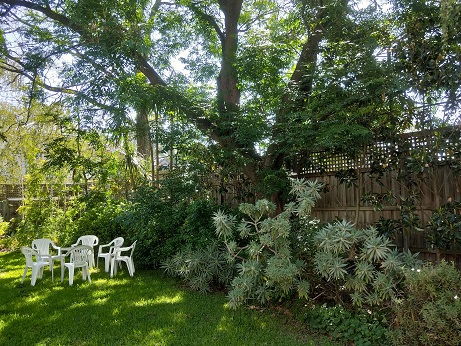
The garden
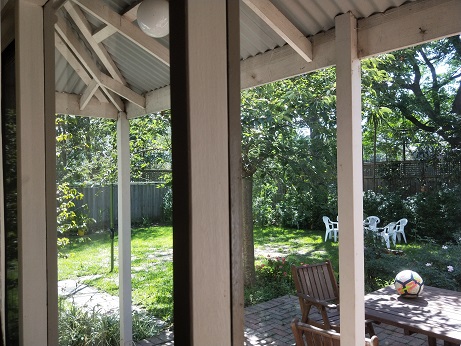
The view from inside
It is a self-contained building and has a restful garden.

Interiors
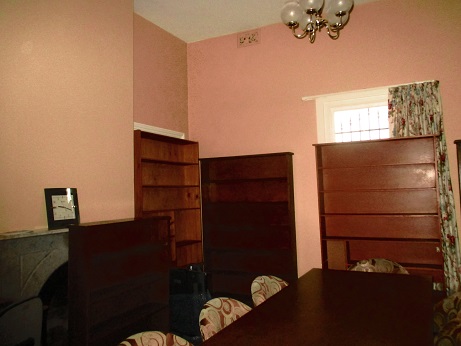
With appreciation to the Anglican church of Melbourne.
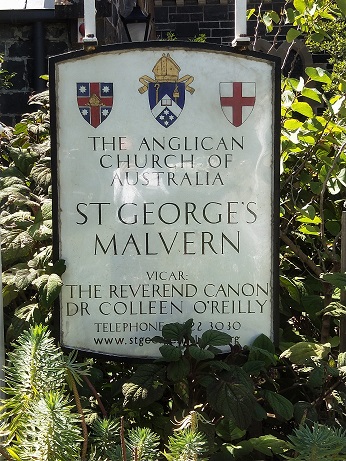
Photos: Philip Malone/ Peter Malone

100 YEARS: THE FIRST CENTENARY OF THE DEATH OF AN AUSTRALIAN-BORN MSC, FR GEORGE ORGAN
100 YEARS: THE FIRST CENTENARY OF THE DEATH OF AN AUSTRALIAN-BORN MSC, FR GEORGE ORGAN
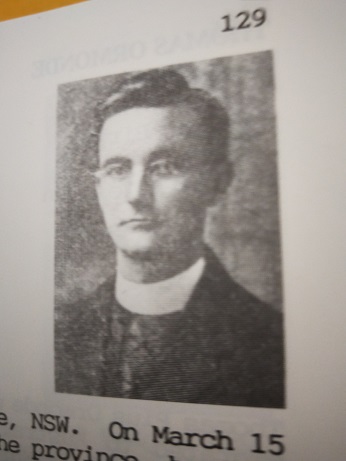
Born July 3, 1890,
First profession 14th of September 1909,
Ordination 30th of November 1917.
Died 14th March 1920.
From Jim Littleton’s book on deceased MSC:
Born in Coonamble, NSW. On March 15, 1920, then the junior priest of the province, he died very suddenly from peritonitis. After ordination he had taught scripture to the scholastics, and, for a short while, religion to the boys at Douglas Park.
His death was sudden. He was in good health until the Thursday previous to his death. On that morning, though feeling somewhat unwell, he offered his daily mass in the community chapel at Douglas Park. As he became very ill during the day, and his condition seemed rather serious on Thursday night, the doctor was summoned from Camden. He ordered an immediate operation and then Fr Organ was transferred at once to Lewisham hospital where, after the operation, the case was declared hopeless. He received the last sacraments from the provincial, Fr Perkins. He lingered on until Sunday morning when he peacefully breathed his last in the presence of Fr Perkins.
His anniversary is shared by Fr Harry Eather MSC.
HARRY EATHER

Born 22 December 1904,
First profession 26th of February 1925,
Ordination first of December 1930,
Died 14 of March 1970.
Again from Jim Littleton:
Born at Uralla, New South Wales, secondary school Christian Brothers College, Waverley.
He had a varied and significant ministry. After ordination he was appointed to the foundation staff of Downlands. It was said his bright and friendly disposition was admirable for good relations with the boys and parents. On volunteering to work on the missions, he was appointed in 1939 to Alice Springs which was then a small parish, but was soon to become a large staging camp for troops en route to the north when war broke out.
After the war he was posted to Port Moresby and he organised a church area recovering from the ravages of war. Six years later he was recalled to the mainland to be parish priest of Camp Hill, where the fine parish church stands as a monument to his memory. His six years in Brisbane ended with his reappointment to Port Moresby as superior of the mission and vicar general until his health began to fail. He was an uncle of Father Paul Power MSC.

Free Downloads
Mass of the Sacred Heart - Free Choral and Instrument Downloads
pdf Mass of the Sacred Heart Gospel Acclamations Year A B and C (1.22 MB)
pdf Mass of the Sacred Heart Bass (734 KB)
pdf Mass of the Sacred Heart Bb Melody (264 KB)
pdf
Mass of the Sacred Heart Piano and Choir
(3.04 MB)
pdf
(264 KB)
pdf Mass of the Sacred Heart Harmony, Bb, Eb and C Instruments (1.71 MB)
pdf Mass of the Sacred Heart Descant, Bb and C Instruments (1.20 MB)
pdf Mass of the Sacred Heart Choir (1.87 MB)
MSC Music Hymnal Download
(a collection from Frank Andersen, James Maher, Paul McCormack)
pdf MSC Music Hymnal Assembly Edition (v2 October 2019) (1.52 MB)
Online Music Store
MSC Music CDs
| Eagle's Wings | Fr Frank Andersen msc |  |
$19.95 AUD | |
| The Galilee Song | Fr Frank Andersen msc |  |
$19.95 AUD | |
| Kindly Light | Fr Frank Andersen msc |  |
$14.95 AUD | |
| Rising Moon | Fr Frank Andersen msc |  |
$24.95 AUD | |
| Heartvoice | James Maher msc |  |
$24.95 AUD | |
| Gospel of Love | James Maher msc |  |
$24.95 AUD | |
| Hidden Within the World | James Maher msc |  |
$19.95 AUD | |
| Mass of the Sacred Heart Music Book (and CD) | James Maher msc |  |
$19.95 AUD | |
| Hymns for the Hard Road | Fr Paul McCormack msc |  |
$24.95 AUD | |
| Strong in Faith | Fr Paul McCormack msc |  |
$24.95 AUD |
MSC Music Books
| Eagle's Wings (revised 2019) | Fr Frank Andersen msc |  |
$14.75 AUD | |
| Scripture in Song Music Book (PDF Only) | Fr Frank Andersen msc |  |
$24.95 AUD | |
| Rising Moon Music Book (PDF Only) | Fr Frank Andersen msc |  |
$24.95 AUD | |
| Heartvoice Music Book | James Maher msc |  |
$24.95 AUD | |
| Gospel of Love Music Book | James Maher msc |  |
$24.95 AUD | |
| Hidden Within the World Music Book | James Maher msc |  |
$19.95 AUD | |
| Mass of the Sacred Heart CD with Music Book | James Maher msc |  |
$19.95 AUD | |
| Hymns for the Hard Road Music Book | Fr Paul McCormack msc |  |
$24.95 AUD | |
| Strong in Faith Music Book | Fr Paul McCormack msc |  |
$24.95 AUD |
MSC Music Sheet Music Downloads (emailed within 48 hours)
(Please respect copyright when printing. Each purchase permits the print of 5 copies only.)
EAGLE'S WINGS COLLECTION |
COMPOSER |
PREVIEW |
PRICE |
PURCHASE |
|---|---|---|---|---|
|
Eagle's Wings Complete Collection (26 Lead Sheets - Download) |
Fr Frank Andersen msc |
$14.75 AUD |
Individual Score Downloads
INDIVIDUAL SONG TITLE |
COMPOSER |
PREVIEW |
PRICE |
PURCHASE |
|---|---|---|---|---|
|
Trinity Song (Lead Sheet & Harmony) |
Fr Frank Andersen msc |
$4.75 AUD |
||
|
I Thank My God (Lead Sheet) |
Fr Frank Andersen msc |
$4.75 AUD |
||
|
In God Alone (Lead Sheet) |
Fr Frank Andersen msc |
$4.75 AUD |
||
|
The Eucharist Song (Lead Sheet) |
Fr Frank Andersen msc |
$4.75 AUD |
||
|
Deep in the Spirit (Lead Sheet) |
Fr Frank Andersen msc |
$4.75 AUD |
||
|
Be Still, My Friends (Lead Sheet) |
Fr Frank Andersen msc |
$4.75 AUD |
||
|
My Soul is Joyful (Lead Sheet) |
Fr Frank Andersen msc |
$4.75 AUD |
||
|
Eagle's Wings (Lead Sheet) |
Fr Frank Andersen msc |
$4.75 AUD |
||
|
Living Water (Lead Sheet) |
Fr Frank Andersen msc |
$4.75 AUD |
||
|
This Blessing Cup (Lead Sheet) |
Fr Frank Andersen msc |
$4.75 AUD |
||
|
Renewal Song (Lead Sheet) |
Fr Frank Andersen msc |
$4.75 AUD |
||
|
Hymn to Christ (Lead Sheet) |
Fr Frank Andersen msc |
$4.75 AUD |
||
|
Morning Praise (Lead Sheet) |
Fr Frank Andersen msc |
$4.75 AUD |
||
|
The Wonders God Has Done (Lead Sheet) |
Fr Frank Andersen msc |
$4.75 AUD |
||
|
Zephaniah's Song (Lead Sheet) |
Fr Frank Andersen msc |
$4.75 AUD |
||
|
Strong and Constant Song (Lead Sheet & Harmony) |
Fr Frank Andersen msc |
$4.75 AUD |
||
|
Come to the Water (Lead Sheet) |
Fr Frank Andersen msc |
$4.75 AUD |
||
|
The Fulness of God / The Fullness of God (Lead Sheet) |
Fr Frank Andersen msc |
$4.75 AUD |
The Galilee Song
INDIVIDUAL SONG TITLE |
COMPOSER |
PREVIEW |
PRICE |
PURCHASE |
|---|---|---|---|---|
| Blessings on the King (Lead Sheet) | Fr Frank Andersen msc | View | $4.75 AUD | |
| Galilee Song (Lead Sheet) | Fr Frank Andersen msc | View | $4.75 AUD | |
| Springs of Salvation (Lead Sheet) | Fr Frank Andersen msc | View | $4.75 AUD |
Kindly Light
INDIVIDUAL SONG TITLE |
COMPOSER |
PREVIEW |
PRICE |
PURCHASE |
|---|---|---|---|---|
| Welcome Home (Lead Sheet) | Fr Frank Andersen msc | View | $4.75 AUD | |
| The Exultet (Lead Sheet) | Fr Frank Andersen msc | View | $4.75 AUD |
James Maher msc
INDIVIDUAL SONG TITLE |
COMPOSER |
PREVIEW |
PRICE |
PURCHASE |
|---|---|---|---|---|
|
Lord Make Us Turn To You - Psalm 80 (PVG and Piano Score) |
Br James Maher msc | View | $4.75 AUD | |
|
Woman of the Sacred Heart - (Lead Sheet) |
Br James Maher msc | View | $4.75 AUD | |
|
Live The Gospel (Lead Sheet) |
Br James Maher msc | View | $4.75 AUD |
Hymns for the Hard Road
INDIVIDUAL SONG TITLE |
COMPOSER |
PREVIEW |
PRICE |
PURCHASE |
|---|---|---|---|---|
|
Heart Song (Lead Sheet) |
Fr Paul McCormack msc |
$4.75 AUD |
VISIT FROM THE PHILIPPINES, RUDY ABAO MSC
VISIT FROM THE PHILIPPINES, RUDY ABAO MSC
Recently, Rudy Abao from the Philippines Province paid a visit to Australia.
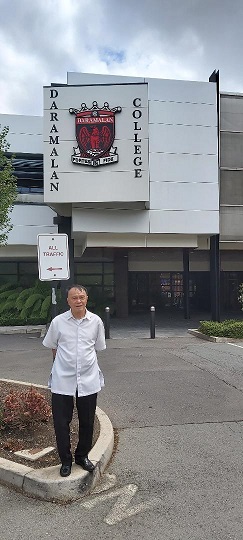
Visiting Daramalan College, Canberra
From 1958 to the end of the 1960s, Filippino students came from the Phlippines for their theological studies at Croydon. One of them died here, Demetrio Sepe, and is buried in the cemetery at Croydon.
Rudy Abao, Jose Pascual and Pedro Arguillas (who died some years ago) came to Croydon in 1962, almost 60 years ago.

From the Archives, Pedro Arguillas, Rudy and Philip Malone.
Rudy was a man of social justice and suffered during the Marcos regime. Later he became Provincial Superior and head of the MSC Media Centre, Communication Foundation for Asia, in Santa Mesa, Manila.
He was able to renew memories and meet many friends and contacts, especially in Melbourne and Sydney. He joined the Victoria/Tasmania community at a meal.
PHILLIPINES MSC PROVINCE CELEBRATING 40 YEARS, MARCH 15th
PHILLIPINES MSC PROVINCE CELEBRATING 40 YEARS, MARCH 15th

Congratulations to the Philippine Province on this significant anniversary
From Manila, Philippines:
The Official Logo for the celebration of the 40th Anniversary of the MSC Philippines as a Province is here! The theme for the celebration, which will be on March 15, 2020, is: “One Heart. New Spirit.”
Here are simple infographics explaining about its important elements.
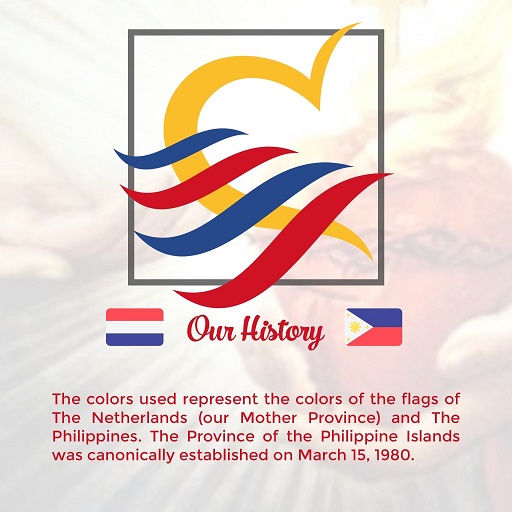
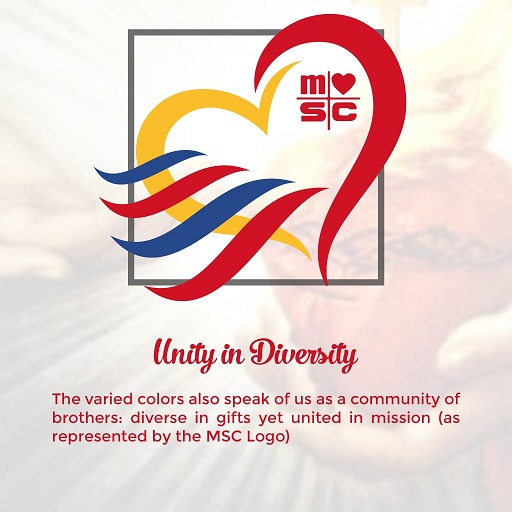
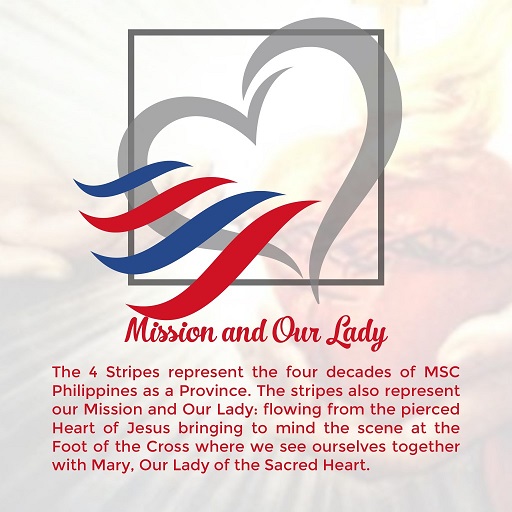
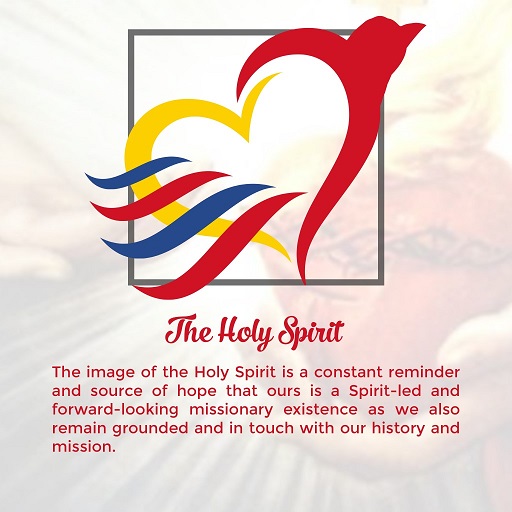
THE VICTORIA/ TASMANIA MSC COMMUNITY 2020
THE VICTORIA/ TASMANIA MSC COMMUNITY 2020
The Victorian/ Tasmanian Community is vying (not competitively) with Douglas Park to be the second largest community in the Province after Kensington Monastery.
Recently there was a First Friday community gathering and meal – which also welcomed Rudy Abao from the Philippines and Hoang, the community leader in Vietnam.
Information: our members are – and where we live:
Blackburn
Parish, Terry Bowman, Parish Priest
Cuskelly House, Khoi Nguyen, Pre-novitiate director, and the two pre-novitiate men, Vincent and Anh
71 Central Rd, Mark Hanns, Professed director, Kenji Konda
77 Central Rd, Brian Gallagher
Mont Albert, Frank Andersen
Northcote, Little Sisters of the Poor, Michael Sims
Whose 84th birthday was celebrated
and, in close-up
Kew, Philip Malone, Community Leader, Paul Castley, Peter Curry, Peter Malone
Monivae, parish supply, Ted McCormack
Kings Meadow, Des Holm, Parish Priest
Moonah, Krish Mathvan, Parish Priest
Contact Us
MSC Music
1 Roma Ave Kensington NSW 2033 Australia
+61293152244
Click for:
This email address is being protected from spambots. You need JavaScript enabled to view it. Facebook
MSC Music Composers
Fr Frank Andersen msc
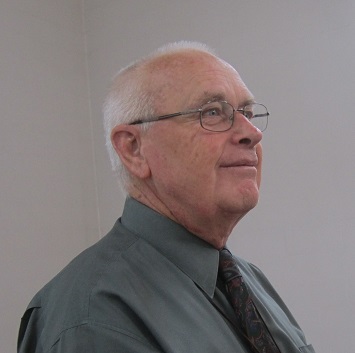 Frank Andersen MSC, a Queenslander, made his first profession on February 26th 1961. During his seminary years, he taught at Daramalan College, Canberra, and continued there after his ordination in August 1968. He spent over ten years teaching in the primary school.
Frank Andersen MSC, a Queenslander, made his first profession on February 26th 1961. During his seminary years, he taught at Daramalan College, Canberra, and continued there after his ordination in August 1968. He spent over ten years teaching in the primary school.
While at Daramalan, Frank began to compose hymns, scripturally-based, for congregational singing and published Eagle’s Wings.
In 1980, Frank spent a year at Berkeley, California, at the Jesuit Centre, specialising in Liturgy, and liturgical participation. On his return from the US, he continued with hymns and a new collection, Everything I Possess. He also wrote music especially for Liturgical use, Scripture in Song, Rising Moon.
In 1990, Frank became a member of the Parish team based in Sunshine, in Melbourne, but travelling all over Australia. This ministry also led to collaborative work in Australia and overseas with the Christian Brothers.
Another collection of hymns was Kindly Light. Frank also published the books, Jesus Our Story and Making the Eucharist Matter.
ACKNOWLEDGING FR PAT AUSTIN MSC, 80 YEARS
ACKNOWLEDGING FR PAT AUSTIN MSC, 80 YEARS
Pat Austin celebrates his 80th birthday on March 10th.
Recently, he had his Diammond Jubilee of Profession, February 26th, 1960. He was ordained priest on 14th December 1968.
In his fifty years of priesthood, Pat has served in a variety of ministries, in colleges, including Monivae, in parishes, including Park Orchards/Warrendyte, and time in both the Northern Territory and Papua New Guinea. In recent years he supplied in the NSW parish of Balranald in the Wagga Diocese. More lately he has been stationed at Kensington Monastery.
